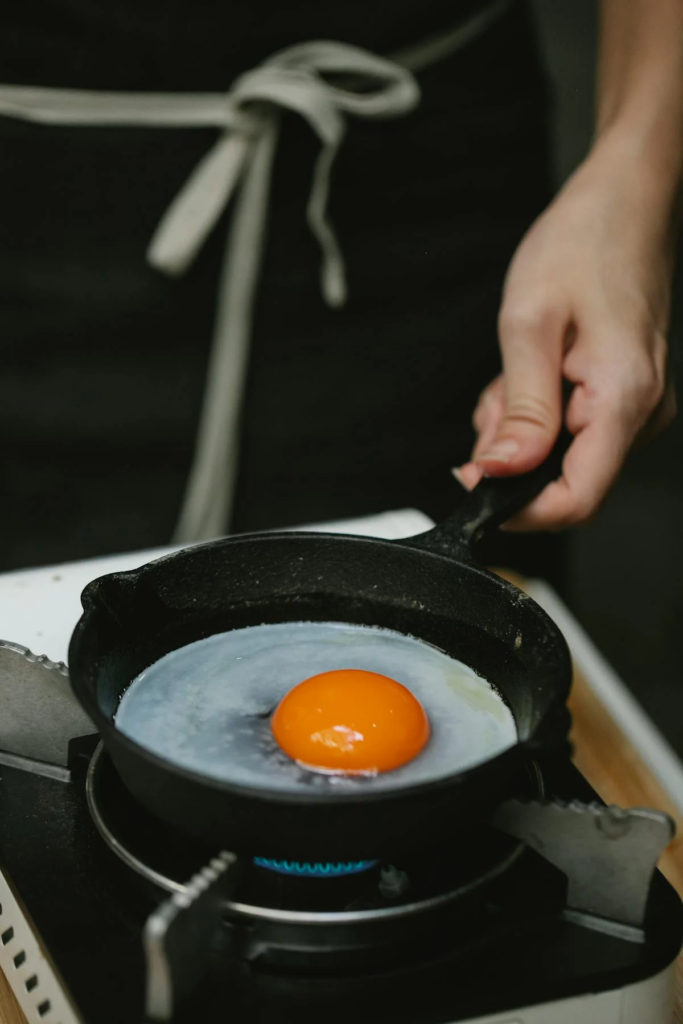Why Cast Iron Is Worth the Effort
go.ncsu.edu/readext?1053908
en Español / em Português
El inglés es el idioma de control de esta página. En la medida en que haya algún conflicto entre la traducción al inglés y la traducción, el inglés prevalece.
Al hacer clic en el enlace de traducción se activa un servicio de traducción gratuito para convertir la página al español. Al igual que con cualquier traducción por Internet, la conversión no es sensible al contexto y puede que no traduzca el texto en su significado original. NC State Extension no garantiza la exactitud del texto traducido. Por favor, tenga en cuenta que algunas aplicaciones y/o servicios pueden no funcionar como se espera cuando se traducen.
Português
Inglês é o idioma de controle desta página. Na medida que haja algum conflito entre o texto original em Inglês e a tradução, o Inglês prevalece.
Ao clicar no link de tradução, um serviço gratuito de tradução será ativado para converter a página para o Português. Como em qualquer tradução pela internet, a conversão não é sensivel ao contexto e pode não ocorrer a tradução para o significado orginal. O serviço de Extensão da Carolina do Norte (NC State Extension) não garante a exatidão do texto traduzido. Por favor, observe que algumas funções ou serviços podem não funcionar como esperado após a tradução.
English
English is the controlling language of this page. To the extent there is any conflict between the English text and the translation, English controls.
Clicking on the translation link activates a free translation service to convert the page to Spanish. As with any Internet translation, the conversion is not context-sensitive and may not translate the text to its original meaning. NC State Extension does not guarantee the accuracy of the translated text. Please note that some applications and/or services may not function as expected when translated.
Collapse ▲Cast iron cookware is an amazing tool to have in the kitchen. There are no toxic chemicals, cast iron holds heat, imparts iron into our food, lasts a lifetime and when properly seasoned properly is naturally non-stick! However, it does requires a little extra care, which can feel intimidating if you’re used to stainless steel or ceramic. But don’t stress! After reading this guide, you should feel more comfortable with using and maintaining cast iron so you can enjoy all it’s benefits.
How to Prevent and Remove Rust
The biggest enemy to cast iron is moisture. It will rust very quickly if it is not dried thoroughly and seasoned before storing. If you notice a small patch of rust, it is best to use a cloth with some salt to scrub it until the rust is gone.
For heavier rust, a vinegar soak can help. Mix equal parts white vinegar and water, then submerge the pan, check it every 15 minutes. As soon as the rust starts flaking off, remove the pan and wash. If you leave it in the vinegar too long, it can damage the metal. If your pan is heavily rusted, especially those second hand pieces of old cast iron, you may need to sandblast it to loosen all the rust.
Seasoning Your Cast Iron Pan
Seasoning might sound complicated, but it’s actually simple. All you’re doing is coating the pan with oil and heating it until the oil forms a protective, non-stick layer. Here’s how:
- Preheat your oven to 500°F
- Coat your pan lightly with oil—just enough for a thin, even layer. You do not want a lot of oil because the heat of the oven could cause a grease fire. Also, a cheap vegetable oil works best for this due to its high smoke point.
- Bake for an hour. Place the pan in the oven and let the oil do its thing. Make sure you turn on the range hood fan or open a window, because the oil will smoke slightly.
- Repeat if needed. You an repeat this 2-3 times, just cool the pan and start the process over.
Each time you cook with your cast iron, the seasoning improves—just be careful not to strip it off when cleaning.
You can buy pre-seasoned cast iron, but I still recommend giving it an initial seasoning before using it to help prevent sticking. For the first few uses, try cooking something like bacon to further build up the seasoning.
Cleaning and Maintenance
The key to cleaning cast iron is protecting the seasoning. Keep these two rules in mind:
- Skip the soap—this is a controversial topic amongst cast iron users but in my experience it can strip away the seasoning.
- Avoid harsh scrubbing tools like steel wool.
Instead, rinse your pan with hot water and wipe it clean with a towel while it’s still warm. If food is stuck, try scrubbing with a bit of salt then rinse with hot water. Massage any leftover oil into the pan.
After cleaning, always dry your pan thoroughly and rub just a tiny amount of oil into the surface before storing. The most detrimental thing you can do to your cast iron is to leave it sitting in water “to soak”. Never let your cast iron sit in water—it will rust quickly!
Is It Even Worth It?
At first, cast iron care might seem like extra work, but once you get the hang of it, it’s actually easier and faster than scrubbing other types of pans. With proper care, your cast iron can last a lifetime—and even get better with age. Plus, there’s something special about cooking with a pan that’s been seasoned over time. If you are fortunate enough to have a hand-me-down piece of cast iron, just think of all the wonderful meals that were made with love using that pan! It is very much worth the initial time it takes to season the cast iron and now it is your turn to carry on the tradition of the cookware that was meant to last a lifetime.





